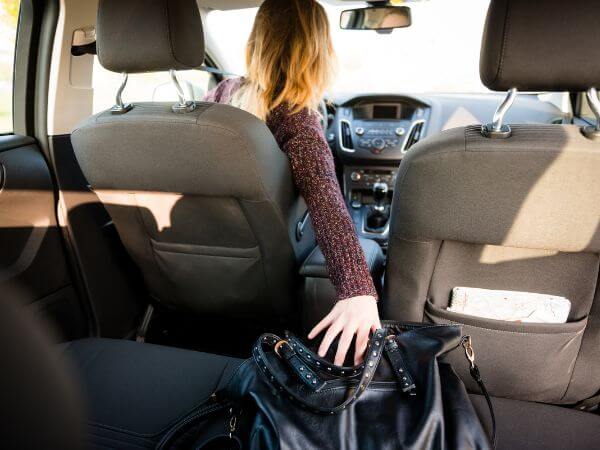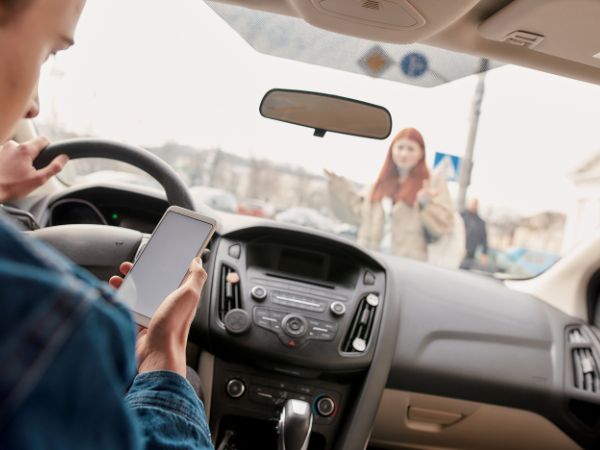Outline
- What are the Causes of Distracted Driving?
- Statistics Show that States are Suffering from distracted driving
- Distractions can Lead to Erratic Driving Behavior, and possibly Car Crashes
- New Technology can help detect Driving Events using Driving Data
- Cell Phone Use and Driver Texting: Detecting, Locating and Counting this source of Distracted Driving

Distracted driving – not being fully focused on the road while at the wheel – killed an estimated 3,142 people in 2020, according to the National Highway Traffic Safety Association (NHTSA). That represents a full 8% of all fatal crashes. Even if, as Texas DOT Executive Director Marc Williams says, “Distracted driving crashes are 100% preventable,” they are also endemic. Over 29,000 people died between 2012 and 2020 due to distracted driving. Today, State DOTs and road safety experts have a new lever to help improve road safety. Driving data technology helps detect not only distracted driving, but also repeated instances of it in their transportation system. Knowing where and when distracted driving happens focuses analysis and decision-making on proactively addressing the causes behind it, including cell phone use. This helps to reduce fatal car crashes – and save lives.
What are the Causes of Distracted Driving?
What are the three main types of distracted driving?
- Visual: when the driver isn’t looking at the road.
- Manual: when the driver has their hands off the wheel.
- Cognitive: when the driver isn’t thinking about driving.
Each of these types of distracted driving can happen on its own, or as a combination of two or more. Predating cell phones, the key risk factors leading to distracted driving are wide and varied. Cell phone use, with all its distractions from texting and notifications to making a call, is well known for causing distracted driving. There is also the infotainment system, adjusting what is being listened to, setting up the navigation system, talking to other passengers, eating or drinking, grooming, tending to children or pets, reaching for something, getting bored while waiting for the traffic light and pulling out the cell phone (we’ve come full circle)… When the driver’s hands, eyes and mind are not all on the road, it can be considered distracted driving.

Statistics Show that States are Suffering from distracted driving
The NHTSA remarks that texting and other messaging services continue to be among the main causes of distracted driving in many states – and this after eight years of its “U text. U drive. U Pay.” campaign. Texting while driving is officially banned in the District of Columbia, Guam, Puerto Rico, the US Virgin Islands and all but two states.
It only takes a quick look at a few states to confirm the driver behavior. According to the Colorado Department of Transportation, in 2020 over 10,000 drivers were involved in crashes where there was distracted driving. Of the 302 crashes that resulted in serious injuries, there were 205 where drivers were using their phone just before the crash.
In Wisconsin, the state DOT reports that distracted driving was also implicated in over 10,000 crashes in 2021, a 13% increase compared to the year before. Fatal crashes related to distracted driving increased by 17% in Texas in 2021 compared to 2020. And in Maryland, over a third of roadway fatalities in 2021 were due to distracted driving. In fact, researchers conducted a Road Safety Attitudes and Behavior Survey for the Maryland Highway Safety Office. They found that nearly half of respondents acknowledged that they participate in distracted driving behaviors while driving.
Sources:
https://wisconsindot.gov/Pages/about-wisdot/newsroom/law/040122-April-LOM-distracted-driving.aspx
https://www.txdot.gov/inside-txdot/media-center/statewide-news/008-2022.html
https://wtop.com/maryland/2022/04/good-bad-news-about-the-death-toll-on-md-roads/
Distractions can Lead to Erratic Driving Behavior, and possibly Car Crashes
During that moment of inattention, the driver’s full awareness is not engaged with their surroundings. Their distraction can lead to acceleration as they catch up to other traffic. They may brake suddenly, for a traffic light or other road user. They may also drive in a wobbly manner, to avoid an obstacle, another road user, or to stay in their lane.
2019
About 1 in 5 people who died in car crashes involving a distracted driver weren’t in the vehicle.
They were vulnerable road users – unprotected users such as pedestrians, cyclists or motorcyclists.
Source: cdc.gov
How Distracted Driving can Lead to Driving Events
Each time a driver becomes distracted, they react to the new situation that developed outside of the vehicle during their moment of distraction. Their reaction creates a driving event. A driving event is a sudden and atypical change in driving behavior, and can be identified through for example speeding, harsh acceleration, harsh braking etc…
New Technology can help detect Driving Events using Driving Data
Driving events indicate that there is a problem on the road, and the driver is reacting to it. Addressing that problem can therefore improve road safety. New technology can detect all driving events. It can measure their intensity, how often they happen, as well as under what circumstances – what day it is, what time it is, what the weather is…
“Adam Snider, Director of Communications at the Governors Highway Safety Association, highlights the need for reliable distracted driving statistics: “We need better and more data collection. Some additional data … to get a better sense of how bad this problem is, who is most likely to drive distracted, and when and where.”
Source: https://www.smartcitiesdive.com/news/ghsa-distracted-driving-reduction-recommendations-2022/625005/
Correlating driving events with crash data then helps to further ascertain where drivers’ less than full attention is impacting safety on the road. Analyzing driving data with all the other information available makes preventive actions possible. Road safety can be improved before a car crash happens.

Cell Phone Use and Driver Texting: Detecting, Locating and Counting this source of Distracted Driving
MICHELIN DDi’s Phone Handling service
This service allows you to identify where and when drivers interact with their phones – one of the principal reasons behind distracted driving. Data is captured from millions of connected drivers across the entire transportation system, without deploying any hardware or human workforce. The insights gained help you to assess the conditions behind each event and make preventive road safety improvements. You can then consult driving data again to track and report progress made in road safety.
MICHELIN DDi, Your Partner for Proactive Road Safety
MICHELIN DDi’s driving data can go much further than distracted driving. Combining our expertise in data analysis and driving behavior, we create solutions that help you detect, locate and assess risky road zones.
We collect driving events in our driving data. We then aggregate and contextualize them. Machine learning and proprietary algorithms transform them into insights for road safety. The data can be directly integrated into your GIS, helping you identify risky road zones and understand the reasons for their existence.
You receive actionable insights on distracted driving and atypical driving events in your transportation system.
Different levels of service are available, and can be tailored to your needs:
Level 1: Locate where and count how often atypical driving events happen
Level 2: Assess and rank near miss hot spots
Level 3: Identify the probability of a crash occurring.
Those insights act as your key performance indicators. They help you assess and prioritize road safety measures to address risky road zones – before car crashes happen. After implementing changes, driving data KPIs again show the impact of the changes made.
Partner with MICHELIN DDi to accelerate your road safety strategy. Reach your Vision Zero goals with our mobility insights.
Contact Michelin DDi to tackle distracted driving on your road system.

